Aperture's Blog, page 150
October 21, 2015
The 2015 Aperture Portfolio Prize Short List
We’re pleased to announce the four finalists for the 2015 Aperture Portfolio Prize, an international photography competition whose goal is to identify trends in contemporary photography and highlight artists whose work deserves greater recognition. This year, Aperture’s editorial and limited-edition print staff reviewed more than seven hundred portfolios. Our challenge was to select one winner and three honorable mentions from this overwhelming response. Of the following exceptional finalists, one will be selected as the winner of the 2015 Aperture Portfolio Prize, receiving a cash prize and an exhibition at Aperture Gallery in New York:
Lisa Elmaleh
Heikki Kaski
Drew Nikonowicz
Laurence Rasti
The winner of the 2015 Aperture Portfolio Prize will be announced in April. The finalists’ portfolios and statements will be available to view on aperture.org. In the meantime, view past Portfolio Prize winners.
The post The 2015 Aperture Portfolio Prize Short List appeared first on Aperture Foundation NY.
October 19, 2015
The Dark Landscapes of Don McCullin
In this interview from the Summer 2009 issue of Aperture magazine, Don McCullin speaks about his experience documenting war and conflict in Biafra, Bangladesh, Cambodia, Cyprus, Lebanon, Northern Ireland, and Vietnam, among other places, with Fred Ritchin, now dean of the School at the International Center of Photography. As Ritchin writes in his introduction, “McCullin rebels against the moniker ‘war photographer.’ He is not content with the impact of his decades’ worth of images, particularly their insufficient role in diminishing the very violence they depict.”
Coinciding with the release of Aperture’s Don McCullin, a chronological survey first published in 2001, now expanded on the occasion of McCullin’s eightieth birthday, we reprint an excerpt from their conversation. This excerpt also appears in Issue 17 of the Aperture Photography App.
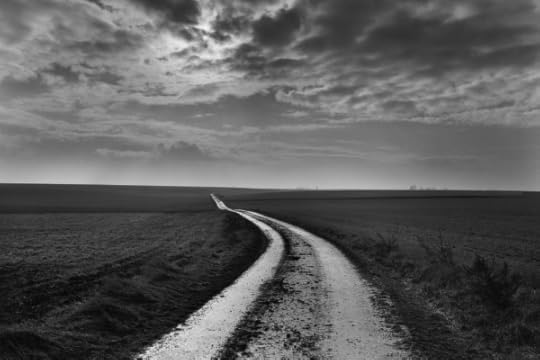
The battlefields of the Somme, France, 2000, All images © Don McCullin
Fred Ritchin: Today we’re going to talk about you being a photographer, a larger career than that of a war photographer.
Don McCullin: I’d like to get away from the awful reputation of being a war photographer. I think, in a way, it’s parallel to calling me a kind of abattoir worker, somebody who works with the dead, or an undertaker or something. I’m none of those things. I went to war to photograph it in a compassionate way, and I came to the conclusion that it was a filthy, vile business. War—it was tragic, and it was awful, and I was witness to murder and terrible cruelty. So do I need a title for that? The answer is no, I don’t. I hate being called a war photographer. It’s almost an insult.
I wasn’t trying to pick up the Robert Capa mantle; I went to war because I felt I was suited to do it. I was young and ambitious, but the ambition started to fade away when I saw people coming toward me carrying dead children, or wounded people coming toward me holding their entrails . . . things like that. Things the average man in the street simply wouldn’t understand, because he’s never been there, thank God.
FR: In the work you’re doing now, the Roman work and the landscapes, it’s as if life has more to offer than simply death. Your sense of time is different. You’re working much more slowly. The time passes over thousands of years. These are traces of things. Before, it was quick, instantaneous, news.
DM: It was like what we would call a head-butt. It was about butting somebody in the head and showing them my images. Now I’m behaving in a much more dignified way. Naturally, I’m getting older and coming to the end of my life, so I’ve slowed down. I’ve reinvented myself. The reason I am doing these new landscapes, this new Roman project, is because it’s a form of healing. I’m kind of healing myself. I don’t have those bad dreams. But you can never run away from what you’ve seen. I have a house full of negatives of all those hideous moments in my life in the past.
So now my challenge is the landscape, the archaeological landscape of Rome . . . it’s very challenging and it’s very beautiful. When I can get into the pariah nations—Syria and Lebanon, they’ve eased up a bit, though Syria is a notorious police state—but when I’m there, I am totally safe and alone. I am constantly pushing the barriers, simply for the privilege of getting my cameras out and taking beautiful photographs.
FR: Of stuff that happened two thousand years ago.
DM: Yes. Because it’s not as if I’m trying to photograph today’s political struggles. In a way, I am trying to do justice to the culture of these historical sites.
FR: But it seems to me you’re also trying to find a meaning in life, what’s good in life or what’s important, or as you say, dignified. The war itself is the abattoir. War itself is the meaninglessness of life, and somehow that is there, even in your landscapes and the Roman work. You’re finding something else, something spiritual, some other kinds of answers in life.
DM: My landscapes are dark. People say: “Your landscapes are almost bordering on warscapes.” I’m still trying to escape the darkness that’s inside me. There’s a lot of darkness in me. I can be quite jovial and jokey and things like that, but when it comes down to the serious business of humanity, I cannot squander other people’s lives.

Vietnamese family after a grenade-attack on their bunker, Hue, 1968
FR: Is that because of what you’ve seen in life, or because of where you’ve come from in life? Are you talking about your life as a war photographer, or are you talking about the neighborhood where you grew up—a sense of fairness of play?
DM: Well, there wasn’t any of that where I grew up. The boys I grew up with were determined to become criminals. I never really wanted to be incarcerated in prison. I spent a few days in prisons in Uganda, and got beaten by the soldiers. Freedom was paramount to my dreams.
And in England we have this class structure. It’s very much there—though it’s being exchanged for new racial structures and religious structures that have come in. England is quite a racial country: it was never really on your side if you didn’t have white skin. So I grew up with all those things, and I’m still living with them, even though I live in the countryside. There are many hurdles in my country; you’re never really going to be free of the hurdles.
FR: But in a way, then, maybe you’ve turned to a kind of poetry of the image, or a kind of lyrical photography, with tonal ranges that are different, more studious, larger formats. . . . In other words, you talk about it as informational, the “Roman Empire,” but you’re doing something else. You’re showing the light and the beauty, the metaphors. You’re working in a broader way. It’s like you have a bigger palette now.
DM: Yes, it is a bigger palette. The Roman Empire as it was, was extraordinary, apart from the fact that it was based on cruelty and horror. . . . You know, when I’m in these great Roman cities, which earthquakes and time have destroyed, I like the fact that I am there, I am enjoying the challenge—but all the time I feel as if I can hear the screams of pain of the people who built these cities. It doesn’t go away. The Roman slaves were paid nothing. All they probably expected was a bowl of food. So when you’re in these remarkable cities, you’re not comfortable really.
You could say: “Well, why are you doing this?” I’m doing it because I have never collectively seen several Roman cities in the Middle East. What I’m getting at is that when I first started as a photographer, I thought: “This is going to be good. I’ll get behind this camera and I won’t have to worry about academia. I’ll just take pictures. It will be easy. And of course, there’s no politics involved!” I’ve done nothing but political assignments in my life. Even going back to ancient Rome, it was steeped in politics and evil.
I feel comfortable doing landscapes in England. I don’t have any apologies, I don’t have problems. And I never do landscapes in England when it’s sunny. I always do them in the winter when the trees are naked. It’s more Wagnerian. I don’t know . . . I like drama and I like darkness.
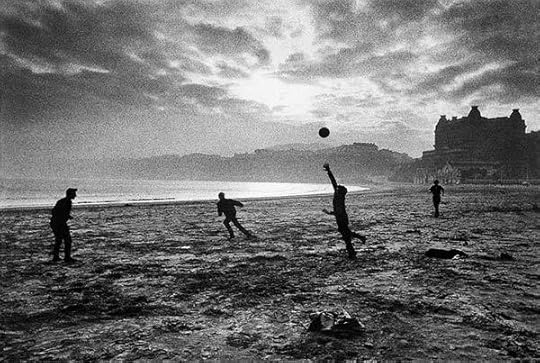
Fishermen playing during their lunch break, Scarborough, Yorkshire, 1967
FR: Eugene Smith used to listen to Wagner when he was printing. That’s how he’d stay up for nights in a row, listening to Wagner, and he’d get those deep prints, like yours—deep skies, your dark skies.
DM: Well, I was influenced by Eugene Smith, as much as I was by Bill Brandt. I like the great prints that Steichen made. I really studied photography in depth. [I brought a stack of books] home to where I lived, in a Hampstead Garden suburb, and they were as tall as this table—and my God, they were full of information.
I used to sit nightly when my children went to bed, studying those books. They became my university. I taught myself everything in photography that I know. Don’t get me wrong about this, I still take a stand—but I am still a student of photography. The moment I think that I have arrived, I’ve had it. I am never going to arrive.
Don McCullin will appear in conversation with Sebastian Junger at the 92nd Street Y in New York on October 30: click here to learn more.
Click here to read the complete interview from Aperture magazine on the Aperture Digital Archive, free through November 6.
The post The Dark Landscapes of Don McCullin appeared first on Aperture Foundation NY.
October 17, 2015
Doug DuBois: The Intimate Photograph

Doug DuBois, Lise and Spencer, Ithaca, NY, 2004
“In the end, we may come to the conclusion that intimacy cannot be photographed directly (as we experience it) because, quite simply, the camera is always in the way. The trick, perhaps, is to understand intimacy as an imaginary space—an illusion that exploits our very real longing for a profound and authentic encounter with another.”
—Doug DuBois
Join photographer Doug DuBois for a two-part workshop through which students will gain a better understanding of how to articulate intimacy and explore ways of creating photographs that demonstrate a certain closeness between photographer, subject, and viewer. Students will work with DuBois to assemble a rhetorical rather than purely emotional guide to photography’s intimate claims.
The first day will consist of both group and individual critiques of each other’s photographs, as well as a discussion of specific photographers and images which offer insight into the challenges, tropes, and problems of making intimate photographs. Some discussion topics and photographers include: “The Bad and the Beautiful” (Hiromix, Corinne Day, Lise Sarfati, and Juergen Teller); “Dirty Old Men” (Larry Clark and Nobuyoshi Araki); “Family Business” (Larry Sultan, Elinor Carucci, Mitch Epstein and Leigh Ledare); and “Intimate Pairs” (Alessandra Sanguinetti, Kelli Connell, and Laura Letinsky).
At the end of the first day, DuBois will offer students a selection of specifically designed assignments to test theories of intimacy as discussed. On the second meeting, two weeks later, students will present their work created from the assignments given during the first session, and discuss their experiences of responding to the assignment and creating new work.
Doug DuBois (born in Dearborn, Michigan, 1960) has photographs in the collections of the Museum of Modern Art, New York; San Francisco Museum of Modern Art; J. Paul Getty Museum, Los Angeles; and Los Angeles County Museum of Art. He has received fellowships from the John Simon Guggenheim Foundation, MacDowell Colony, and National Endowment for the Arts. DuBois has exhibited at the J. Paul Getty Museum and MoMA, The Irish Museum of Modern Art in Dublin and the Museo d’Arte Contemporanea di Roma in Italy. He has photographed for magazines, including the New York Times Magazine, Time, Details, and GQ. He has published two books with Aperture: All the Days and Nights in 2009 and My Last Day at Seventeen, which will be available in the fall of 2015. DuBois teaches in the College of Visual and Performing Arts at Syracuse University and in the Limited Residency MFA program at Hartford Art School.
The post Doug DuBois: The Intimate Photograph appeared first on Aperture Foundation NY.
October 16, 2015
Amy Elkins Featured on Wired
2014 Aperture Portfolio Prize winner, Amy Elkins’ series Black Is the Day, Black Is the Night featured on WIRED.com.
The post Amy Elkins Featured on Wired appeared first on Aperture Foundation NY.
October 15, 2015
John Gossage: Photographs in Books, the Complete Story
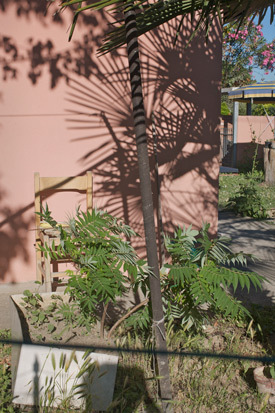
John Gossage from pomodori a grappolo (2015)
Join John Gossage the do-it-all photographer, book designer, production manager, and publisher, for a two-day workshop that will guide participants through the process of producing a photobook, from conception to completion. Students will learn how to navigate various decisions, ranging from creative, aesthetic choices to budgetary options, while developing a photographic project into book form. Gossage will present an overview of the photobook-making process and lead conversations about specific books brought in by the participants. He will then review each participant’s proposed book project while engaging the group in discussion.
Gossage will be joined by Aperture’s senior editor, Denise Wolff, for a conversation about how Aperture develops its publications and how its editors work with photographers. A few other special guests will stop by throughout the weekend to share their insights on photobook-making. Working step-by-step through the process of creation, with personalized advice, each participant will come closer to finalizing his or her photobook.
Participants are required to bring a proposed book project at any stage of completion, from a group of pictures to a completed mock-up, as well as a photobook they admire, to share with the group for discussion. Lunch and light refreshments will be served both days.
John Gossage (born in New York, 1946) is based in Washington, D.C. His photographs have been featured in numerous solo and group exhibitions over the past forty-five years. His many one-person exhibitions have included The Better Neighborhoods of Greater Washington, Corcoran Gallery of Art, Washington, D.C., 1976; Gardens, Leo Castelli Gallery, New York, 1978; Photographs of Berlin, Cleveland Museum of Art, 1989; LAMF, Sprengel Museum, Hannover, Germany, 1990; One Work in 39 Parts, Saint Louis Art Museum, 1994; There and Gone, Sprengel Museum, Hannover, 1998; The Romance Industry, Comune di Venezia, Venice, 2003; Berlin in the Time of the Wall, Galerie Zulauf, Freinsheim, Germany, 2005; and The Pond, Smithsonian American Art Museum, Washington, D.C., 2011. An exhibition at the Art Institute of Chicago is currently in preparation.
Gossage is regarded as one of the finest American photobook-makers of the last forty years. In 2010, Aperture reissued his monograph The Pond (1985) in a twenty-fifth-anniversary edition. Gossage’s other notable works include Stadt Des Schwarz (1987); LAMF (1987); There and Gone (1997); The Things That Animals Care About (1998); Hey Fuckface (2000); Snake Eyes (2002); Berlin in the Time of the Wall (2004); Putting Back the Wall (2007); The Secrets of Real Estate (2008); The Thirty-Two Inch Ruler/Map of Babylon (2010); and pomodori a grappolo (2015).
In 2002, Gossage started his own publishing company, Loosestrife Editions. He is represented by the Stephen Daiter Gallery in Chicago, and his work is included in major public and private collections.
Tuition: $500 ($450 for currently enrolled photography students and Aperture Members at the $250 level and above)
Registration ends Sunday, November 29
Register here
Contact education@aperture.org with any questions.
General Terms and Conditions
Please refer to all information provided regarding individual workshop details and requirements. Registration in any workshop will constitute your agreement to the terms and conditions outlined.
Aperture workshops are intended for adults 18 years or older.
If the workshop includes lunch, attendees are asked to notify Aperture at the time of registration regarding any special dietary requirements.
Release and Waiver of Liability
Aperture reserves the right to take photographs or videos during the operation of any educational course or part thereof, and to use the resulting photographs and videos for promotional purposes.
By booking a workshop with Aperture Foundation, participants agree to allow their likenesses to be used for promotional purposes and in media; participants who prefer that their likenesses not be used are asked to identify themselves to Aperture staff.
Refund/Cancellation Policy for Aperture Workshops
Aperture workshops must be paid for in advance by credit card, cash, or debit card. All fees are non-refundable if you should choose to withdraw from a workshop less than one month prior to its start date, unless we are able to fill your seat. In the event of a medical emergency, please provide a physician’s note stating the nature of the emergency, and Aperture will issue you a credit that can be applied to future workshops. Aperture reserves the right to cancel any workshop up to one week prior to the start date, in which case a full refund will be issued. A minimum of eight students is required to run a workshop.
Lost, Stolen, or Damaged Equipment, Books, Prints Etc.
Please act responsibly when using any equipment provided by Aperture or when in the presence of books, prints etc. belonging to other participants or the instructor(s). We recommend that refreshments be kept at a safe distance from all such objects.
The post John Gossage: Photographs in Books, the Complete Story appeared first on Aperture Foundation NY.
October 14, 2015
On Venice ’79
For Redux, Aperture magazine’s regular column on rediscovered books and writings on photography, we look at the catalogue that accompanied a one-time, photography-only biennial. This article appeared in Issue 17 of the Aperture Photograph App. It originally appeared in Aperture magazine #220, Fall 2015, “The Interview Issue.”
By Lyle Rexer
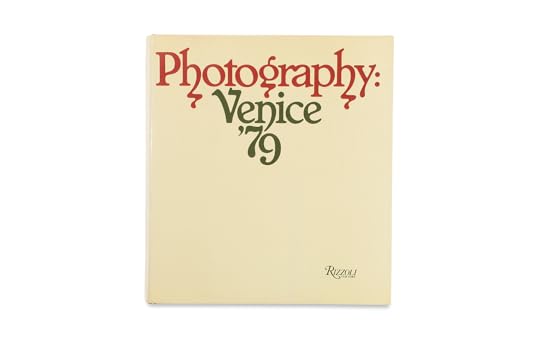
Cover of Photography: Venice ’79 (Rizzoli, 1979)
In 1979, Venice discovered photography—then turned its back on the medium. In a possible attempt to expand the Venice Biennale brand, the municipality, assisted financially by UNESCO and programmatically by the International Center of Photography, installed one of the largest photography exhibitions ever mounted in Europe. The catalogue, Photography: Venice ’79, expressed the tentative hope that this might be “the model for future such festivals.”
Instead it was a one-off that, in retrospect, provides a revealing glimpse of where photography stood globally and the contradictions that would henceforth make any exhibition employing the generic term photography highly problematic.
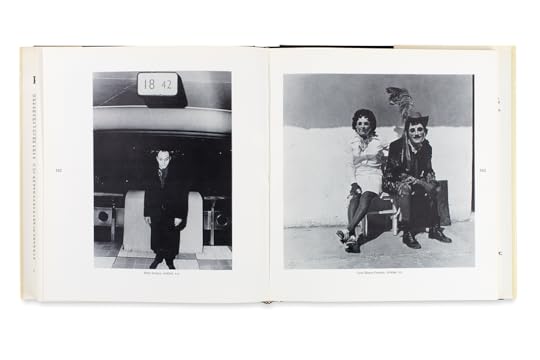
Pages from Photography: Venice ’79 including photographs by Boris Kossoy and Carlo Bianco Fuentes
Like its off-year scheduling between two art biennials, photography’s position at the time might be described as “between”—between art and technology, between expression and documentation, between politics and personal vision. These familiar dichotomies in photographic discourse (the jacket copy called them a “quarrel”) played out in twenty-five separate exhibitions that made up Venice ’79.
Looking over the table of contents, a contemporary reader recognizes the presentation not as a survey of photography in general but rather an argument for expressive art photography. In the words of Carlo Bertelli, one of the organizers, it was “an effective view of a continuity which has to be taken into account.” But what continuity? Exhibitions devoted to Alfred Stieglitz, Henri Cartier-Bresson, Robert Frank, and Diane Arbus emphasized their “mastery” and “consummate artistry,” but so did exhibitions devoted to work by Weegee, Lewis Hine, and Eugène Atget, none of whom thought of himself as an artist working in any sort of formal tradition or continuum.
As critics of the time were beginning to point out, such an approach to the history of photography was selectively enfranchising to a high degree. The issue was not (and is not) that some photographers are chosen and some are banished from a pantheon, but that even in a sprawling exhibition like Venice ’79, the complex, polyglot character and usages of photography are sacrificed to ideas about what constitutes photographic art. After all, arty gestures and decisions are common in every area of photography, from fashion photography to snapshots. A more illuminating overview might have shown how photographers of many different kinds communicate with their audiences through choices that enable them to negotiate meaning. But such an approach would have opened the gates to a tide of pictures from vernacular and commercial sources.
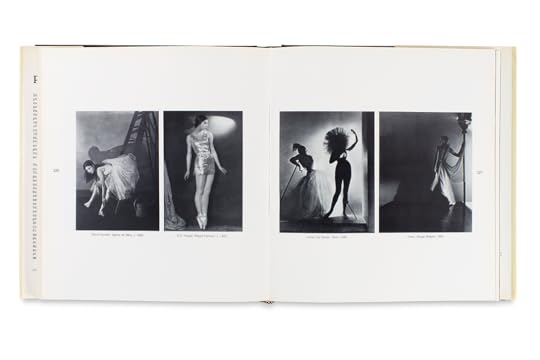
Pages from Photography: Venice ’79 including photographs by Soichi Sunami, E.O. Hoppé, and Horst
Likewise, by 1979 there were many artists and photographers adopting critical and interrogative approaches to photography. Few of them were included in Venice ’79. Lucas Samaras, Ugo Mulas, Robert Heinecken, and Joan Fontcuberta were the most prominent conceptualists. Perusing the catalogue, my favorite is Marialba Russo, a photographer previously unknown to me. Her sequence, in both black and white and color, shows a fake childbirth on a southern Italian street. The baby is a doll and the mother a swarthy, bearded man in a dress. Shot in a frenzied style, it comments not only on the documentary mode (exemplified in Venice by exhibitions of work by W. Eugene Smith and Robert Capa) but also on the political issues of class and regional division.
Politics always complicates discussions of what is and is not art, especially in photography, where pictures are so often used for propaganda. One of the most important of Venice ’79’s exhibitions, Hecho en Latinoamérica (Made in Latin America), demonstrated the force of photography as political witness but also the confusions of a theory and an exhibition that sought to define photography in expressive and formal terms. On the one hand, this collection of three hundred works by photographers from across the region, originally assembled for an exhibition by the Consejo Mexicano de Fotografía, constituted a bid for artistic recognition by marginalized countries.

Pages from Photography: Venice ’79
It was the largest selection of such photographs to appear in Europe, and it contained the work of many great artists, including Graciela Iturbide from Mexico, Fernell Franco and Carlos
Caicedo from Colombia, and Geraldo de Barros from Brazil. On the other hand, the introduction by Raquel Tibol dismisses art photography in favor of documentary work—but then turns
contemptuously on mere “mimetism.” She demands that the work be anchored in social realities but also in the imagination. She extols mechanical modernity but decries technical perfection. Above all, she sets a wholly political agenda for photography, arguing that it should be aligned against imperialism and “oligarchic exploitation.”
This edict sanctioned works displaying both kitsch symbolism and harrowing realism. It underscored dramatically that photography serves many ends, often at the same time, and thus can’t be contained (or understood) by the boxes curators put it in. The increasing incorporation of photography into art biennials partly explains why there would be no Venice ’81. (The Venetian organizers started an architecture biennial the next year, which has continued.) More important, however, the very amplitude of Venice ’79 showed the futility of trying to say something definitive about a medium that is as fluid and ubiquitous as the water surrounding Venice.
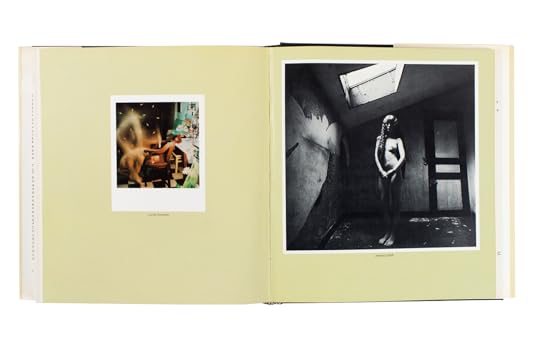
Pages from Photography: Venice ’79
Click here to find Aperture magazine on the Aperture Foundation website.
The post On Venice ’79 appeared first on Aperture Foundation NY.
Mark Seliger: Portraiture

Mark Seliger, Barack Obama, The White House, Washington, D.C., 2010
Join photographer Mark Seliger for a two-day workshop, intended exclusively for photographers who are fluent with their camera systems and are able to work with studio lighting. During the workshop, participants will receive a portfolio review, execute two portrait assignments with specific lighting combinations, and participate in a final group critique. The goal of this workshop is for participants to develop their own voices within the genre of portraiture.
On the first day, Seliger will lead a conversation about the history of photographic portraiture as it relates to the work of the participants, and discuss process, subtext, and the creation and execution of concepts for environmental portraiture. Seliger will also address technical issues and talk about problem-solving while shooting in the field. If time permits, the afternoon is reserved for group portfolio reviews.
On the second day, the participants will create teams and work together to develop a concept for portraiture. The teams will then split into two groups to create a shoot. A final critique of the assignments will follow. Light refreshments and lunch will be provided on both days. Please contact education@aperture.org with any dietary restrictions at least one week before the workshop begins.
Mark Seliger (born in Amarillo, Texas, 1959) was raised in Houston. Seliger moved to New York City in 1984, and three years later, in 1987, he began shooting for Rolling Stone. Seliger was signed as their chief photographer in 1992, and has shot over 150 covers for the magazine since. In 2001, Seliger moved to Condé Nast. He shoots frequently for Vanity Fair, Details, Italian Vogue, L’Uomo Vogue, and German Vogue. His photographs have been exhibited in museums and galleries, and he has published numerous books, including Listen (2010), In My Stairwell (2005), and Physiognomy (1999). Seliger is the recipient of the Alfred Eisenstaedt Award, the Lucie Award for Outstanding Achievement in Portraiture, and a Clio Grand Prix.
Tuition: $500 ($450 for currently enrolled photography students and Aperture Members at the $250 level and above)
Registration ends Sunday, January 10.
Contact education@aperture.org with any questions.
Register here
General Terms and Conditions
Please refer to all information provided regarding individual workshop details and requirements. Registration in any workshop will constitute your agreement to the terms and conditions outlined.
Aperture workshops are intended for adults 18 years or older.
If the workshop includes lunch, attendees are asked to notify Aperture at the time of registration regarding any special dietary requirements.
Release and Waiver of Liability
Aperture reserves the right to take photographs or videos during the operation of any educational course or part thereof, and to use the resulting photographs and videos for promotional purposes.
By booking a workshop with Aperture Foundation, participants agree to allow their likenesses to be used for promotional purposes and in media; participants who prefer that their likenesses not be used are asked to identify themselves to Aperture staff.
Refund/Cancellation Policy for Aperture Workshops
Aperture workshops must be paid for in advance by credit card, cash, or debit card. All fees are non-refundable if you should choose to withdraw from a workshop less than one month prior to its start date, unless we are able to fill your seat. In the event of a medical emergency, please provide a physician’s note stating the nature of the emergency, and Aperture will issue you a credit that can be applied to future workshops. Aperture reserves the right to cancel any workshop up to one week prior to the start date, in which case a full refund will be issued. A minimum of eight students is required to run a workshop.
Lost, Stolen, or Damaged Equipment, Books, Prints Etc.
Please act responsibly when using any equipment provided by Aperture or when in the presence of books, prints etc. belonging to other participants or the instructor(s). We recommend that refreshments be kept at a safe distance from all such objects.
The post Mark Seliger: Portraiture appeared first on Aperture Foundation NY.
October 13, 2015
Mark Klett: Traveling the Devil’s Highway—Exploring the Borderlands of the Sonoran Desert, Arizona


Mark Klett, Sunrise Near Raven Butte, Gila Mountains, 2014

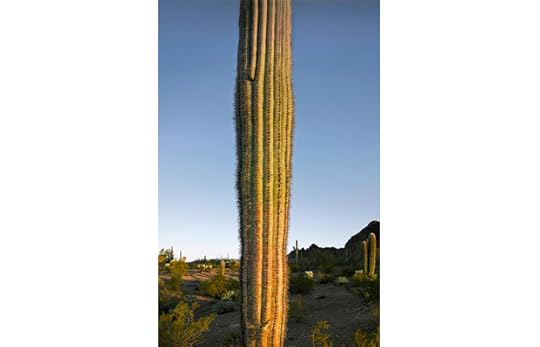
Mark Klett, Saguaro trunk at dawn, 2013


Mark Klett, Ocotillo and Mosque made from shipping containers, “Combat Village,” Marine Training camp in the Copper Mountains, 2013


Mark Klett, Bighorn sheep through border fence, looking into Mexico, 2015


Mark Klett, Faint trail, granitic mountains near Raven Butte, 2013


Mark Klett, Border patrol “cutting sign,” near midnight, el Camino del Diablo, 2013
Join photographer Mark Klett for a seven-day field workshop and camping expedition that will revisit a legendary landscape during a new century. Klett will guide the group through the heart of the Camino del Diablo, or the Road of the Devil, which crosses mountains and basins as it winds through the lush desert landscape in the borderlands of the Sonoran Desert in Arizona. This trip is designed for photographers who can work independently yet participate within a group setting, and who like outdoor adventure.
In 1861, a young mining engineer named Raphael Pumpelly had traveled the Camino, which was so rugged that only the most intrepid of travelers dared to cross. He famously described it in his book Across America and Asia (1870) as an arid landscape of incredible beauty, which was home to some of the greatest biodiversity and spectacular desert scenes on the continent. Today the same road is still accessible, and the landscape is as magnificent and wild as it has been for centuries. The route traverses open desert, mountain ranges, a military bombing range, and a national wildlife refuge. The landscape reveals its human history in the form of artifacts from military occupation, human migration, and centuries of native cultures that predate Anglo settlement in the region.
The workshop will include a portfolio review at the beginning, and a review of work created during the excursion at the end. Participants will meet in and depart from Phoenix, Arizona, and travel by car to the field region. They will then drive the Camino and camp for three nights in the wild and undeveloped desert landscape. The workshop will provide participants with the opportunity to make new photographic work in this unique location. It will be a group experience with ample opportunities for individual exploration. The route will take participants close to the border of Mexico, to the edge of the Cabeza Prieta National Wildlife Refuge, and across the Barry M. Goldwater bombing range. The goal is to explore a place of natural beauty and compelling human history.
Please view the itinerary for a day-to-day schedule.
Mark Klett is Regents’ Professor of Art and Distinguished Sustainability Scholar at Arizona State University. He is a photographer whose background includes working as a geologist before turning to art practice. His photographic projects span a period of more than thirty-five years, and as the chief photographer for the Rephotographic Survey Project (1977–79), he established his artistic perspective on the American Western landscape by rephotographing Western sites first visited in the 1860s.
Klett has received fellowships from the Guggenheim Foundation, National Endowment for the Arts, Pollock-Krasner Foundation, Buhl Foundation, and Japan–United States Friendship Commission. His work has been exhibited and published in the United States and internationally, and his work is held in over eighty museum collections worldwide. He is the author of fifteen books, including Reconstructing the View: the Grand Canyon Photographs of Mark Klett and Byron Wolfe (2012), The Half Life of History (2011), Saguaros (2007), After the Ruins (2006), Yosemite in Time (with Byron Wolfe and Rebecca Solnit, 2005), Third Views, Second Sights (2004), Revealing Territory(1990), and Second View: The Rephotographic Survey Project (1984).

Currently enrolled photography students and Aperture Members at the $250 level and above receive a 10% discount on workshop tuition. To learn more about becoming a member of Aperture, please visit: aperture.org/join.
If you are interested in participating in this workshop, please complete the application below. Once you have completed the application you will be contacted by Aperture with further instructions regarding how to complete the $500 non-refundable deposit. Please note: your registration is NOT complete until the $500 non-refundable deposit has been processed by Aperture Foundation.
Tuition must be paid in full by February 1, 2016.
Please be sure to review our terms and conditions before completing the application. By submitting the application, you agree to all of the terms and conditions including the our cancellation policy.
If you have any questions please contact education@aperture.org with any questions.
Fill out my online form.
Fill out my Wufoo form!
Review terms and conditions.
The post Mark Klett: Traveling the Devil’s Highway—Exploring the Borderlands of the Sonoran Desert, Arizona appeared first on Aperture Foundation NY.
October 12, 2015
Bill Armstrong: The Secrets of Color in Photography

Bill Armstrong, Untitled (Film Noir #1433), 2012
“I recommend Bill Armstrong’s color workshop 100%. His understanding of color in photography is unparalleled … He is a working artist who understands and can talk about his medium. My experience of his class was incredibly valuable and full of insights.”
— W.M. Hunt
Join photographer Bill Armstrong for a two-day workshop designed for photographers of all skill levels who would like to learn the aesthetic principles behind creating strong color photographs. The workshop will focus on how to unleash the power of color to for maximum impact. Exploring both the technical and aesthetic aspects of color, Armstrong will examine such topics as the spectrums of light and color; how the eye perceives color; contrast and harmony; color and time of day; and the psychology and symbolism of color. Through lecture, visual presentations and hands-on exercises students will gain a core understanding of how color works, which will improve their technical ability to shoot and print. Light refreshments and lunch will be provided on both days. Please contact education@aperture.org with any dietary restrictions at least one week before the workshop begins.
Bill Armstrong is a fine art photographer whose work is represented by ClampArt in New York, Hackelbury in London and numerous galleries across the country and in Europe. His work is also shown in various museum collections including the Vatican Museum, the Victoria & Albert Museum, Philadelphia Museum of Art, Brooklyn Museum, Houston Museum of Fine Arts, and the Bibliotheque National de France. Armstrong also teaches at the International Center of Photography and the School of Visual Arts.
Tuition: $500 ($450 for currently enrolled photography students and Aperture Members at the $250 level and above)
Registration ends Sunday, March 6.
Contact education@aperture.org with any questions.
Tuition: $500 ($450 for currently enrolled photography students and Aperture Members at the $250 level and above)
Register here
General Terms and Conditions
Please refer to all information provided regarding individual workshop details and requirements. Registration in any workshop will constitute your agreement to the terms and conditions outlined.
Aperture workshops are intended for adults 18 years or older.
If the workshop includes lunch, attendees are asked to notify Aperture at the time of registration regarding any special dietary requirements.
Release and Waiver of Liability
Aperture reserves the right to take photographs or videos during the operation of any educational course or part thereof, and to use the resulting photographs and videos for promotional purposes.
By booking a workshop with Aperture Foundation, participants agree to allow their likenesses to be used for promotional purposes and in media; participants who prefer that their likenesses not be used are asked to identify themselves to Aperture staff.
Refund/Cancellation Policy for Aperture Workshops
Aperture workshops must be paid for in advance by credit card, cash, or debit card. All fees are non-refundable if you should choose to withdraw from a workshop less than one month prior to its start date, unless we are able to fill your seat. In the event of a medical emergency, please provide a physician’s note stating the nature of the emergency, and Aperture will issue you a credit that can be applied to future workshops. Aperture reserves the right to cancel any workshop up to one week prior to the start date, in which case a full refund will be issued. A minimum of eight students is required to run a workshop.
Lost, Stolen, or Damaged Equipment, Books, Prints Etc.
Please act responsibly when using any equipment provided by Aperture or when in the presence of books, prints etc. belonging to other participants or the instructor(s). We recommend that refreshments be kept at a safe distance from all such objects.
The post Bill Armstrong: The Secrets of Color in Photography appeared first on Aperture Foundation NY.
October 9, 2015
Issue 17 of the Aperture Photography App is Now Available

The new issue of the Aperture Photography App is now available to download on your iOS device. Here’s a look inside Issue 17:
● A Redux column from “The Interview Issue” of Aperture magazine about Photography: Venice ’79
● An excerpted conversation between Don McCullin and Fred Ritchin from the Summer 2009 issue of Aperture magazine
● An essay by Stanley Wolukau-Wanambwa on recent photobooks about African subjects
● A preview of images and an excerpted essay from Richard Learoyd’s recently published monograph Day for Night
● An Aperture Beat on Richard Misrach’s talk with Aperture staff about his forthcoming book, Border Cantos
Every issue of the Aperture Photography App is free– subscribers have new issues delivered to their device automatically. Select articles later appear here, on the Aperture blog. Click here to download the app today!
The post Issue 17 of the Aperture Photography App is Now Available appeared first on Aperture Foundation NY.
Aperture's Blog
- Aperture's profile
- 21 followers



